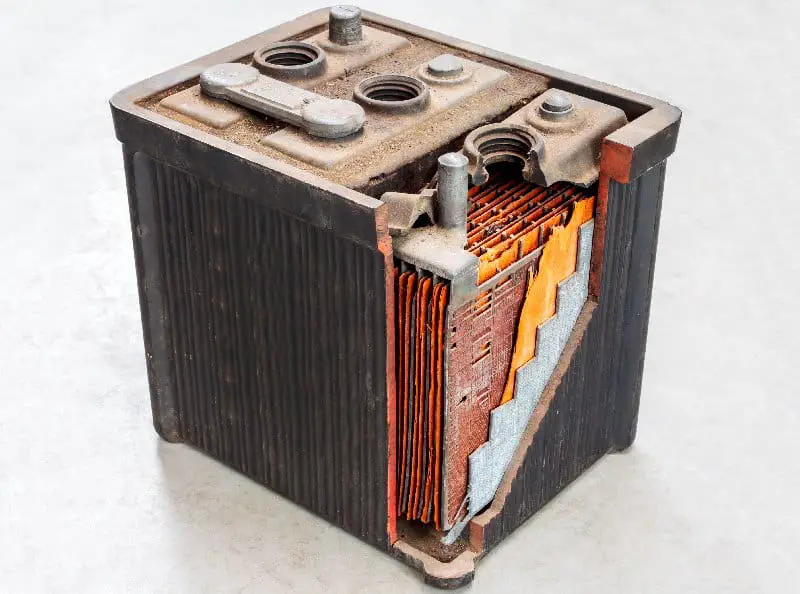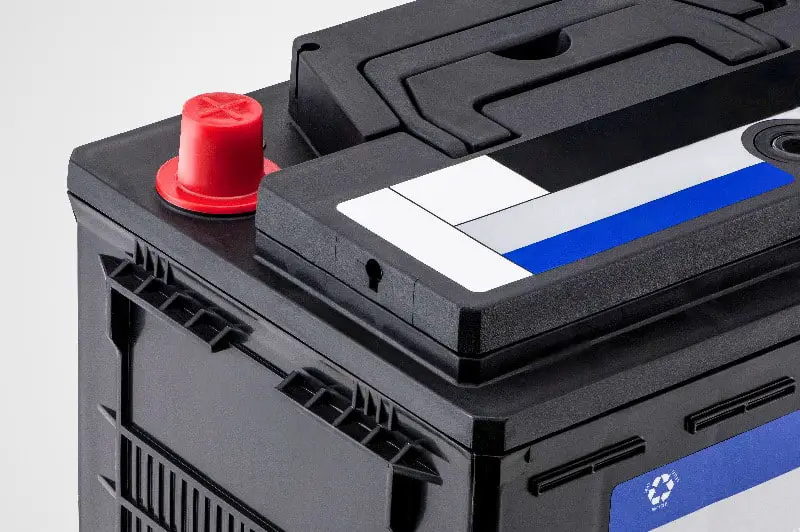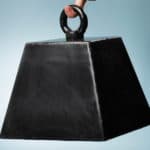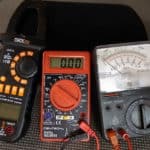The marine battery in your boat is essential for proper boat function. The battery runs electronic equipment on your boat, like lights and accessories, and is what starts and runs the engine. Having the proper battery for your boat is essential for a smooth-running vessel that lasts a long time.
Knowing how crucial a battery is to the overall functionality of your boat is a great starting point. Now when it comes to narrowing down the options and selecting a boat marine battery, that can be the tricky part – and that is the part we’re going to help with.
What is a Marine Battery?
A marine battery is responsible for many different actions taking place in and around the boat.
For starters, the marine battery powers electronic functions like lighting and special features throughout the boat, as I mentioned. You can’t drive your boat at night without that battery.
Secondly, a marine battery also helps to start and operate the boat. Different types of batteries will be needed when starting and running the boat. These batteries (discussed in the next section) are the main source of electricity that keeps the boat moving forward.
To make it easier to understand, consider a car battery. The main function of the car battery is to start the car and allow it to run. Of course, there are other imperative elements, like the gas and motor, that work together to run a car (and a boat as well), but without the battery, nothing will be able to operate.
Car Battery vs. Marine Battery
There are important differences between a car battery and a boat battery; this means that no, you can’t use them interchangeably. Car batteries have one job: to start up the car and give power to the engine. Once the engine is powered up, the battery is no longer needed.
A marine battery works slightly differently. Instead of having a single job, a marine battery will continue to provide essential energy to the boat throughout the entirety of the trip. That means that the marine battery will not only need to provide a single burst of energy to start the boat, but it will also need to provide ample amounts of energy throughout the trip.
Never try to replace a marine battery with a car battery. A car battery is not designed for a boat and will either a) not work at all or b) cause damage to the boat in the long run.
Buying a specific marine battery for your boat is a must, but what marine battery should you get, considering there are three different options available on the market?
What Are the Different Types of Marine Batteries?
With three different main options to choose from, it may seem like a challenge to find the marine battery that is right for your boat. The three types of marine batteries include starter (cranking), deep cycle, and dual-purpose.
Starter Battery

The first (and possibly most important) marine battery to consider is the starter battery, also known as a cranking battery. This type of battery does exactly what the name states: it starts (or cranks up) the boat.
Starter batteries send off a large amount of electricity in a short burst to the engine, allowing for the boat to start up. The typical starter battery will send anywhere from 75 to 4000 amperes to the engine in as little as 5 to 15 seconds. This burst of electricity is required to turn the starter, starting your boat’s engine.
The design of a starter battery is simple: constructed with a series of thin lead plates, allowing for a larger surface area. This is needed to generate high amounts of amperage. When the starter battery has finished its job of starting the engine, it charges from the engine’s alternator.
While starter batteries are crucial for the function of a boat, there are a few drawbacks to this type of marine battery:
- Starter batteries are rather fragile due to the thinner layers, and they can be more prone to wearing down during high impacts.
- The lifespan of a starter battery is relatively short compared to other types of marine batteries if used incorrectly, due to their inability to handle deeper discharges.
Deep Cycle Batteries
A starter battery will only give off enough energy to start the boat. You need a battery that will be able to handle the boat over long periods while it is in use. That battery is the deep cycle battery.
The electric trolling motor found on your boat will
rely heavily on deep cycle batteries. The deep cycle marine battery can handle
a continuous energy draw, being replenished fully after each use.
Design-wise, the deep cycle marine battery differs from the starter battery significantly. Instead of a multitude of thinner lead plates, the deep cycle battery has thicker lead plates.
Another thing to consider when choosing a deep cycle battery is that the size of the battery should be able to take on 2 to 4 times the amount of energy you would expect, before needing to be recharged.
The weight of the battery directly correlates to the amount of lead contained. The heavier the battery, the more energy it is able to provide.
For more information check out our article How do I choose the proper size batteries for my electric trolling motor.
Dual-Purpose Batteries
When you think you have to purchase a starter battery AND a deep cycle battery, it may seem like an even bigger challenge (as well as extra money out of your pocket). So why not get one battery that can do both jobs?
The dual-purpose battery works exactly as it sounds: it has the potential to send sudden bursts of energy to the engine to start up the boat as well as the ability to handle long periods on the water while continuously releasing energy.
However, this does not mean that dual-purpose batteries are the best of both worlds, or that they should be used in all boats. Some boats have a separate system of starter batteries and deep cycle batteries used together, in particular, larger-sized boats that need the combination of power to keep their equipment functioning properly.
Finally, take into consideration the extra cost if you are thinking about buying a dual-purpose marine battery. They are more expensive than a single-use type battery. The cost of a dual-purpose marine battery, however, can be justified as a single battery option in a small fishing boat.
Which Marine Battery is Right for Me?
The type of battery you purchase for your boat will highly depend on your boat’s specific needs. There will likely be a manufacturer guide for your boat discussing the type of batteries you need.
In many circumstances, a dual-purpose battery is necessary for the boat to function properly.
You should also consider the size and weight of the battery you are planning to buy. There are a few different options when it comes to sizing, so knowing the different size batteries to choose from will also help your buying decision.
Battery chemistry(type) is another important topic. For more details on that topic, check out our article containing information on different types of deep cycle batteries.
Does Weight Make a Difference?
Much like anything else you might put in your boat, weight can have an impact. Something that is far too heavy for your vessel can have an overall negative impact on the way your boat moves through the water.
Knowing the weight of the marine battery you are buying is imperative in making the right decision. A smaller-sized boat shouldn’t try to handle a larger-than-life marine battery, just as a larger-sized boat shouldn’t try to run off of a small battery that can’t take on the workload.
How Much Does a Marine Battery Weigh?
Marine batteries will have different weights depending on their size and how much energy they can handle. For the most part, you can expect a marine battery to weigh anywhere from the lower range of 40 pounds to upwards of over 70 pounds.
Smaller-sized marine batteries will likely be around 40 pounds and are ideal for smaller-sized boats and fishing boats that do not need extensive amounts of energy.
Larger models, like those reaching over 70 pounds, have plenty of energy behind them and should be used on larger sized boats and speedboats, depending on how much power you want behind your engine.
For more information, check out our article on Weights for electric trolling motors and deep cycle batteries.
Tips and Tricks for Marine Battery Longevity
The only way to make sure that your battery has a long life and is working at its peak performance is to handle it with care and apply maintenance regularly. So, what are some of the best ways to ensure your battery stays fully functional and free of damage? Here are a few ways to ensure your battery is in tip-top shape:
Battery Choice
- Stay with the same battery chemistry throughout your entire boat. Remember that there are a variety of different battery chemistries to choose from, including flooded, gel, AGM, and more. Depending on your needs and pricing, it may be tempting to mix different battery chemistries. However, doing so can certainly result in the over or undercharging, which will lead to the overall malfunction and destruction of the batteries.
- Consider purchasing a multi-step charger with an attached temperature sensor. This type of handy device will allow you to control the charge and is a rather wise investment if you’re dealing with the specific battery types of AGM or gel.
Charge
- Try to keep your battery in a shallow discharge as much as possible. A shallow discharge leads to a longer overall battery life. That being said, a lot of boat owners who struggle with marine battery maintenance will recommend purchasing a solar power trickle charger, complete with a smart regulator to keep things running smoothly.
- Keep in mind that the maximum discharge for a deep cycle marine battery is 50%. If you discharge it lower than 50%, you can cause some serious damage to your deep cycle marine battery. For best battery life you should try to avoid going under 80% discharge, but this can vary for different battery chemistries.
- Never leave your marine battery in a discharged state for an extended period of time. By leaving your marine battery discharged for too long, you run the risk of causing sulfide damage to the battery. It will result in lowering the overall energy capacity.
- Always charge the marine battery after use. Charging after each use will allow the battery to replenish itself without spending too much time in a depleted state. Always make sure to charge up immediately when you’re done using the boat.
- One of the biggest things to remember is to never mix new and old marine batteries. By placing new and old marine batteries together on a system in series or parallel, the old battery is likely to pull down the new battery. It will essentially suck the energy out of the newer product causing it to end up in an overall deteriorated state. Replacing batteries in sets or replacing all the batteries in the entire boat at once will prevent this problem as well as save you money in the long run.
Storage and Maintenance
- Always make sure that you are keeping your battery in a safe place. You should have an acid-proof storage location, such as a box, to secure your battery away from the elements. Tie the marine battery down to ensure it doesn’t fly off or become damaged while the boat is in motion.
- Make sure to inspect and clean the terminal connectors regularly. Doing so will ensure there is no loss of conductivity over time. It is recommended to clean the terminal connectors at least once a month, but every other week is ideal.
- If you are using a wet cell battery, always make sure the fluid levels are maintained. Doing so ensures the wet-cell marine battery functions properly and will not run out of steam during use.
Click here to read our review of Trolling Motor Batteries
How Long Does a Marine Battery Last?
When it comes to the lifespan of a marine battery, there is not an overall average. Different types of marine batteries have individual average lifespans. Gel and AGM have the longest average lifespan, typically 2 to 3 years. With a little extra effort, you may be able to extend the life of these batteries closer to 5 years.
Other variables in battery life are cycles and depth of discharge. Every battery has a rated amount of cycles depending on the depth of discharge. For more information on that Check out our detailed article.
As with any other piece of technology, if it is maintained and properly cared for, it is likely to last a lot longer. A battery that isn’t taken care of may end up only lasting for a few months to a year, and that is why it is so utterly important to make sure you’re maintaining it.
Click here to read out detailed article on How Long A Battery Lasts




